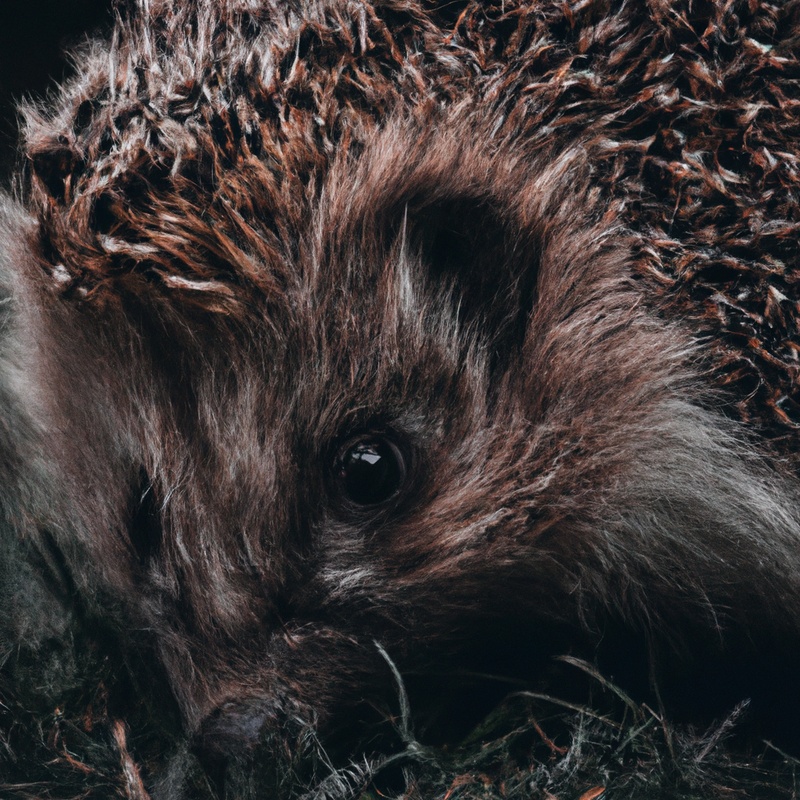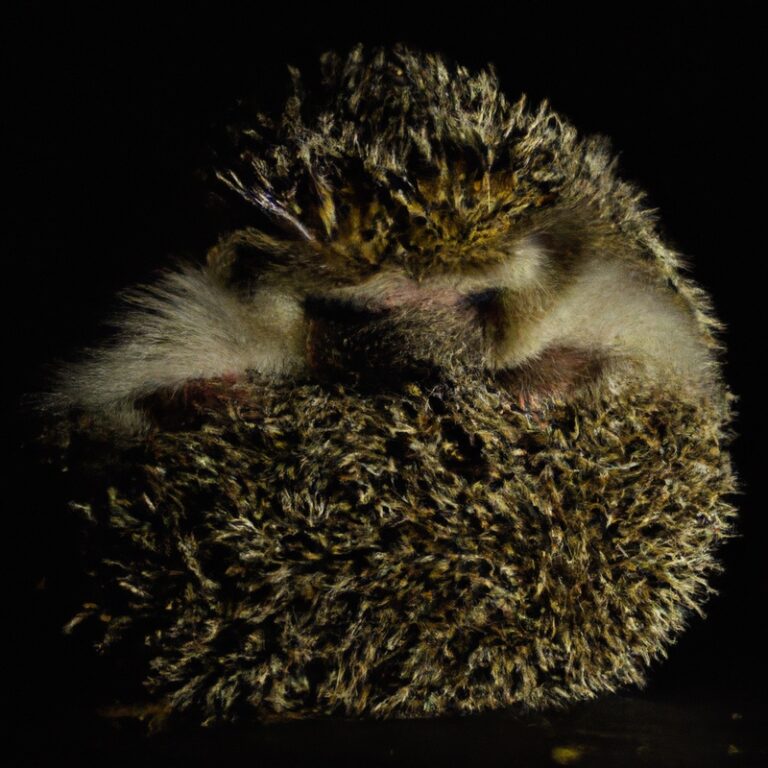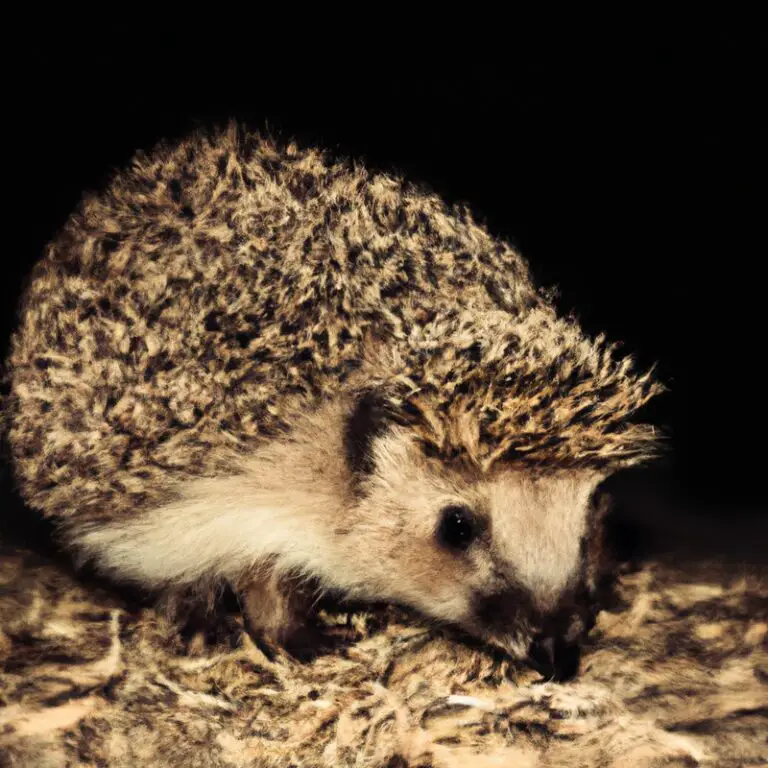What Is The Role Of Hedgehogs In Controlling Caterpillar Populations?
Key Takeaways:
- Hedgehogs play a vital role in controlling caterpillar populations by preying on them.
- The presence of hedgehogs in an ecosystem can help to naturally balance and reduce caterpillar numbers.
- Hedgehogs are effective predators of caterpillars, which can help to prevent the damage they cause to plants and crops.
- Encouraging hedgehog populations can be an eco-friendly and natural way to control caterpillar outbreaks.
Are you tired of caterpillars munching on your precious garden plants?
Well, have you ever considered enlisting the help of a spiky ally?
Enter the humble hedgehog, a natural-born predator with a voracious appetite for caterpillars.
In this article, we’ll explore the fascinating role of hedgehogs in controlling caterpillar populations and how they can be your garden’s best friend.
From their diet and feeding habits to their hunting behavior, we’ll uncover the secrets behind these prickly protectors.
So, buckle up and get ready for a wild journey into the world of hedgehogs and their incredible impact on caterpillar infestations!
| Role of Hedgehogs in Controlling Caterpillar Populations | Description |
|---|---|
| Hedgehogs | Caterpillars |
| Feed on caterpillars | Caterpillars are a food source for hedgehogs |
| Control population | Hedgehogs help in reducing caterpillar populations |
| Natural pest control | Hedgehogs contribute to balancing ecological systems by keeping caterpillar populations in check |
| No reliance on pesticides | Using hedgehogs as natural predators reduces the need for chemical pest control methods |
The role of hedgehogs in controlling caterpillar populations
Hedgehogs play a crucial role in controlling caterpillar populations by acting as natural predators.
Hedgehogs as natural predators of caterpillars
Hedgehogs are natural predators of caterpillars. They play an important role in controlling caterpillar populations in the ecosystem.
Hedgehogs rely on caterpillars as a major part of their diet, and they actively hunt and consume them.
The spines on their backs offer protection against the caterpillar’s defensive mechanisms. This natural predation helps maintain a balance in the insect population and contributes to the overall health of the ecosystem.
So, having hedgehogs around can be beneficial for keeping caterpillar populations in check.
Benefits of hedgehogs in gardens and ecosystems
Hedgehogs provide valuable benefits in gardens and ecosystems.
Hedgehogs as garden allies
Hedgehogs make great allies for your garden! They help control pests by eating slugs, snails, insects, and even small rodents. Their spiky exterior also offers protection against larger pests like rabbits.
Creating a hedgehog-friendly garden with shrubs, piles of leaves, and access to water can encourage them to take up residence.
Avoid using pesticides, as they can harm hedgehogs and reduce their food sources. So, embrace these adorable creatures and let them defend your garden naturally!

Hedgehogs’ diet and feeding habits
Hedgehogs primarily feed on a variety of insects and invertebrates, including caterpillars.
They have a diverse diet and are known for their ability to control caterpillar populations.
Caterpillars as a part of hedgehogs’ diet
Hedgehogs have a varied diet, and caterpillars are indeed a part of it.
These spiky little creatures are insectivores, meaning they primarily feed on insects and other invertebrates.
Caterpillars are a good source of protein for hedgehogs and provide them with essential nutrients.
Along with other insects, caterpillars contribute to maintaining a balanced and healthy diet for hedgehogs.
It’s fascinating to see how these small creatures play such an important role in the hedgehog’s diet.
Impact of caterpillar infestations
Caterpillar infestations can cause significant damage to plants and crops, leading to reduced yields and economic losses.
Damage caused by caterpillars to plants and crops
Caterpillars can cause significant damage to plants and crops.
They have a voracious appetite and can quickly consume large quantities of foliage, which can lead to stunted growth or even death of the plants.
They also have the ability to chew through fruits, flowers, and stems, ruining the entire crop.
Some caterpillars are also capable of creating webs or tents that further destroy the foliage.
Their feeding activity can weaken the plants, making them more susceptible to diseases and other pests.
Overall, caterpillar infestations can result in reduced crop yield and economic losses for farmers.
How hedgehogs control caterpillar populations
Hedgehogs control caterpillar populations through their hunting behavior and feeding patterns.
Hedgehogs eat caterpillars, which helps to naturally reduce their population.
Hedgehogs’ hunting behavior and feeding patterns
Hedgehogs are nocturnal creatures that primarily hunt for food at night. They have an excellent sense of smell, which helps them locate their prey.
Hedgehogs mainly feed on insects, such as caterpillars, beetles, slugs, and snails.
They use their sharp teeth and strong jaws to capture and consume their prey. Hedgehogs are also known to eat small vertebrates like mice and frogs.
Their hunting behavior and feeding patterns play a crucial role in controlling caterpillar populations, as they help maintain a balance in the ecosystem by reducing the number of these pests.

Encouraging hedgehogs in your garden
Make your garden hedgehog-friendly by providing shelter, food, and a safe environment.
Creating a hedgehog-friendly environment
Creating a hedgehog-friendly environment is easy! Provide food and water sources, like cat or dog food and a shallow dish of water.
Leave a small area of your garden wild to provide cover and shelter.
Avoid using chemicals and pesticides that could harm hedgehogs.
Finally, check for hedgehogs before using garden machinery or lighting bonfires.
Simple changes can make a big difference in supporting these adorable creatures!
Frequently Asked Questions
Are hedgehogs harmful to humans or pets?
Hedgehogs are not typically harmful to humans or pets.
They are docile creatures that avoid confrontation and prefer to curl up into a defensive ball when they feel threatened.
Their spines can prick, but they usually do not cause serious harm.
However, it’s important to note that hedgehogs can carry certain diseases, so it’s best to avoid direct contact and practice good hygiene when handling them.
Additionally, if you have pets, it’s important to supervise interactions and ensure everyone’s safety.
How can I attract hedgehogs to my garden?
To attract hedgehogs to your garden, create a welcoming habitat by providing shelter, food, and water.
Leave areas of your garden wild to encourage insects and worms, which are a hedgehog’s main food source.
Install a hedgehog house or provide piles of leaves and logs for them to nest in.
Make sure they have access to fresh water by placing a shallow dish in your garden.
Avoid using pesticides, as they can harm hedgehogs.
Do hedgehogs eat all types of caterpillars?
Hedgehogs are natural predators of caterpillars and will eat a variety of species.
They are especially fond of hairy or spiny caterpillars, such as those from the family Arctiidae.
However, they will also consume other types of caterpillars, including ones that are smooth and do not have any visible defenses.
Hedgehogs have a diverse diet and caterpillars are just one part of it.
They also eat insects, slugs, snails, and even small vertebrates like frogs and mice.
So while hedgehogs do eat many types of caterpillars, they are not exclusively dependent on them.
What else do hedgehogs eat besides caterpillars?
Hedgehogs are not just limited to eating caterpillars.
They have a varied diet that includes insects, worms, slugs, snails, and even small mammals.
Hedgehogs are known to be opportunistic feeders and will eat whatever is available in their environment.
So, besides caterpillars, hedgehogs can also eat a wide range of food sources to meet their dietary needs.
Final Verdict
Hedgehogs play a vital role in controlling caterpillar populations.
As natural predators, they help maintain a balanced ecosystem by regulating the number of caterpillars, which can cause significant damage to plants and crops.
Hedgehogs’ diet includes caterpillars, making them effective in reducing infestations.
To encourage hedgehogs in your garden, create a hedgehog-friendly environment with shelter, food, and water sources.
By welcoming these garden allies, you can benefit from their pest control abilities while supporting biodiversity.
So, invite hedgehogs into your garden and let them work their magic!







